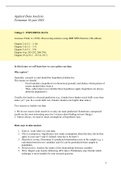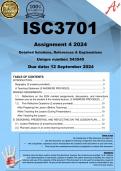College aantekeningen
Applied Data Analysis (ADA) lectures written out / college samenvatting (english) 85 p.
- Instelling
- Universiteit Leiden (UL)
This 85 pages file contains all 8 ADA lectures completely written out. The document is in English.
[Meer zien]














